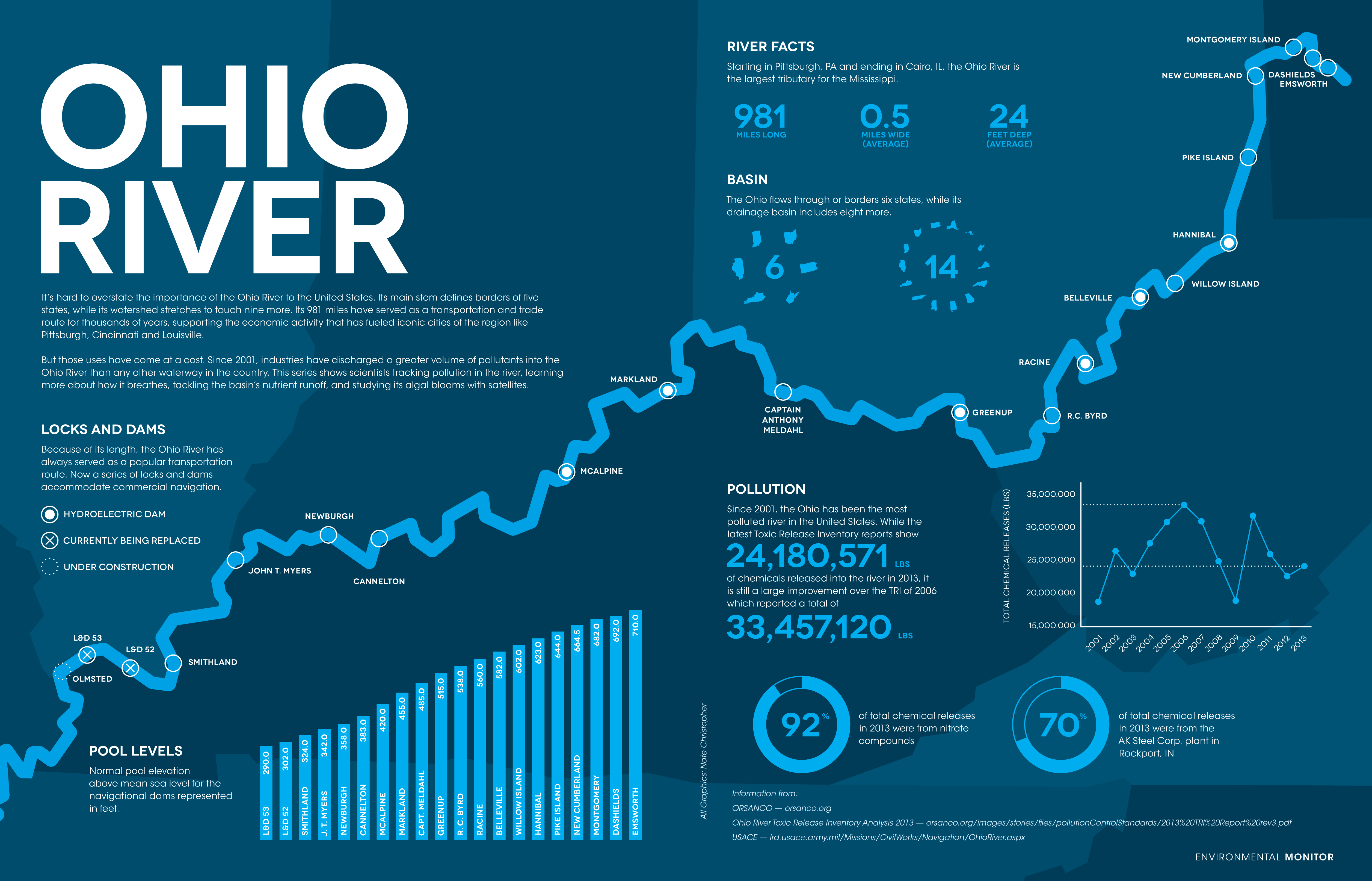History of the Ohio River

Infographic provided by Fondriest
Historic Significance
Throughout the history of the Ohio River, it has been used as a natural border between many of the states in the Midwest. In the early 1800s, the river became not only a means of separating territories, but also a tool for trade between between the states adjacent to the river. Along with local trade, the Ohio River also connects to the Mississippi River, which opens the range of trade substantially. This easily traversable trade route led to the founding of various large cities along the banks of the river, such as Cincinnati and Pittsburgh. As these cities grew, the use of the river grew as well despite the introduction of railways and automobiles as it was still much cheaper and faster to take advantage of the river.
The River Today
Unfortunately, with the growth of industrial cities along the Ohio River, pollution in the waters of the river became a very notable issue. As factories started being built along the river, these factories would empty their waste directly into the waters of the river. This led to the Ohio River being one of the most polluted rivers in America, with over 20 million pounds of chemicals being released in the waters annually according to ORSANCO.